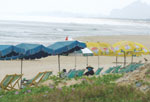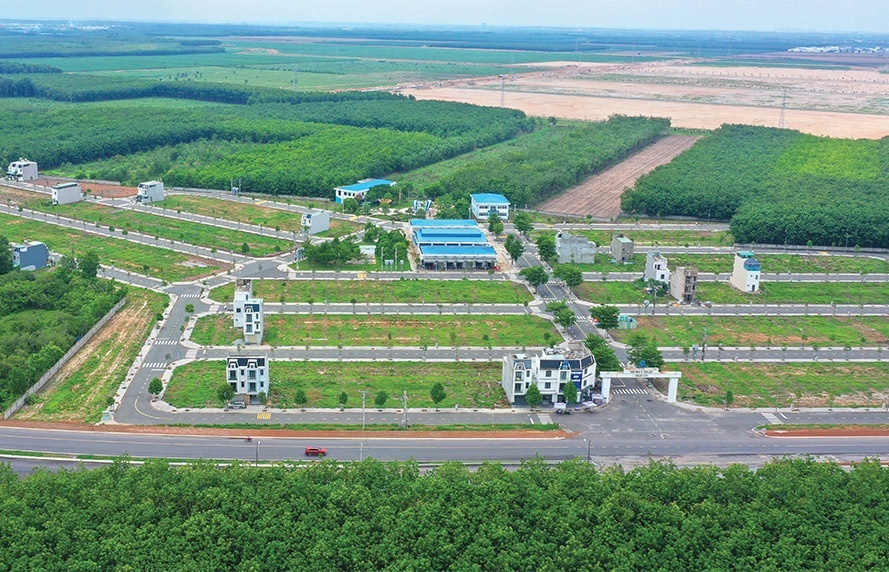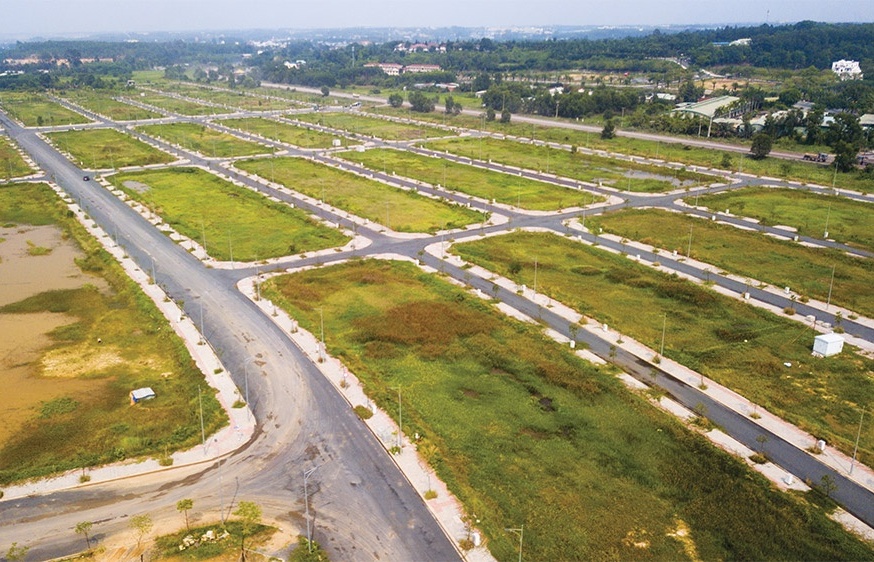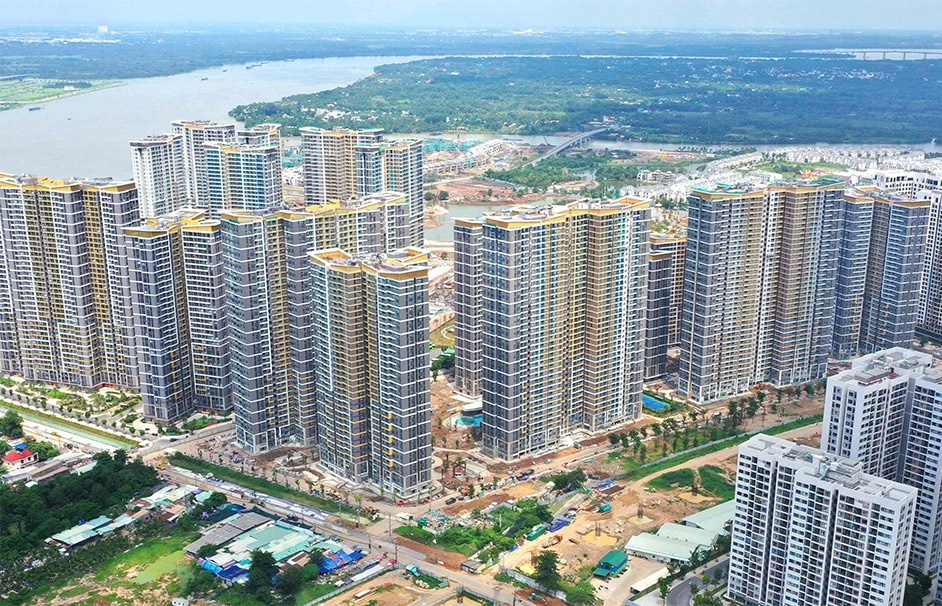Tide rising on developers’ promises
On a scenic cape on Son Tra Peninsula workers slowly clear the grass around half-completed bungalows as guards idle the day away from the vantage point of their watch towers. The luxury resort that developers agreed would be finished early last year still looks a long way from completion.
 Bogged down: progress is proving slow on many proposed resorts along the Danang to Hoi An coastline |
Two years ago, the developer – Hai Duy Corporation – declared its intention to open a four-star resort with 120 rooms and a water music park early on a 20 hectare seaside area. A family hotel of 200 rooms and another 170, five-star rooms would be added by 2007.
However, construction on the Bai But tourist complex has seen little progress and the unfinished houses look incongruous against the black asphalt of the newly-built road and white sandy beach.
It is not hard to find similar cases along the huge coastline stretching from Danang to Hoi An in Quang Nam province, as developers have bought up large tracts of property with the promise of building resorts to attract tourists. Local inhabitants have been turfed off the land yet many properties are still a plan on paper.
According to Danang Tourism Department, some 41 tourism projects have been proposed for the city. Son Tra, which was partly transformed from a military zone into tourist complex, has drawn six projects with estimated investment capital of $120 million.
Investor interest is particularly high in the beaches between Marble Mountains and Hoi An, where Silver Shores proposed a 20ha resort, along with the 37ha Lano Resort, 10-hectares Paradise Resort and 10ha Qudos Resort.
With principle agreements awarded to early investors, there seems to be no prime beachfront land left for late comers.
However, words sometimes speak louder than action. Along the route, only five resorts, –– Furama, Sandy Beach, Palm Garden and Golden Sand – have opened for business while all the others remain up in the air, despite developers having sketched out ambitious plans to convince local governments to allocate them land.
Hoang Tra Company last year broke ground on a $20m hotel next to the five-star Furama Resort but the site remains empty except for an artist’s impression of the hotel on a roadside board.
Even the long-awaited Paraside Resort near the Marble Mountains is still an empty beach with only two half-finished house frames to show for months of planning. The site where Magnum plans to build 90 villas and 350-room hotel has been made off limits to outsiders by a hardboard fence.
Such a fence is ubiquitous along the 30km stretch of road, which Danang and Quang Nam province built together with the aim of exploiting tourist dollars from one of the world’s most luxurious stretches of beaches.
On the other end of the road towards Hoi An, four projects, including the 200-room Sofitel Hoi An Beach Resort, the Charm Cham Beach Resort with 200 rooms and Cua Dai Tourist Port remain empty plots without any construction machines on site.
In fact, all the best beachfront properties along the road are occupied with resorts, golf courses and restaurants. However, almost all projects are still on paper except for the Nam Hai Resort, which aims to open by the end of this year with 60 rooms and 45 villas.
Cash shortages are the major hurdles for resort projects to be realised. An investor who is running a resort in Hoi An points to the nexus of developer ambition and their financial ability.
“All projects here are large while many developers are inexperienced and short of cash,” he said.
Quang Nam provincial authorities require all resorts to be of three-star standard and upwards, while Danang’s conditions are even more ambitious, asking developers to only build five-star properties.
That means developers should have tens of million dollars ready for a project. However, most developers are locals and it is clear many of them are not financially viable. Project financing is a challenge at a time when banks have tightened policies on property lending following fears of the high risks associated with the lackluster real estate market.
A host of developers such as Hai Duy Corporation and Son Tra Company have announced schemes to sell villas to second investors, convinced that they could earn decent incomes from renting the purchased properties to tourists.
However, buyers show little interest in such a novel approach in Vietnam as they have already been depressed by stagnant real estate market.
A number of developers simply acquired land first and looked for foreign cash to build. Hoi An Tourist Company has announced it is seeking foreign investors for the Sofitel Beach Resort while Bai But tourist complex is reportedly cash-strapped and its developers plan to set up a joint-venture with foreign investors.
Developers blame local authorities for not doing enough to promote tourism overseas. Although the recent opening of Tiger Airway’s low-cost flights from Singapore to Danang helps, developers are asking for more regional links to such tourist feeder markets as Japan, Europe and China.
Local authorities are obviously in a dilemma. They want to build more luxury resorts to earn more tourist dollars but it is hard for them to seek capable developers.
Although regulations state that land will be recovered if developers do not implement projects within one year from when the land is allocated, authorities have shown reluctance to chase developers away as they are still courting capital sources in a bid to promote the economy.
Danang is playing it safe to make sure developers are committed to their plans. Authorities require all developers to deposit a sum of land rent and use fees in advance and if they do not carry out projects as planned, they will have their investment licences revoked and lose the money.
Yet, few investors have fallen under the hammer despite little progress on their projects. A foreign investor warns the area is getting out of control and beaches will remain empty if local authorities do not implement tough action plans on fictional projects.
No. 756/April 10-16, 2006
What the stars mean:
★ Poor ★ ★ Promising ★★★ Good ★★★★ Very good ★★★★★ Exceptional
Latest News
More News
- Trump's trade policies could shape Vietnam's economic outlook: Dragon Capital (November 15, 2024 | 16:56)
- The One Destination partners with Singapore investor and institutional fund to build ESG real estate complex (November 11, 2024 | 10:32)
- Stabilising measures must sit alongside land price hikes (November 07, 2024 | 09:56)
- CapitaLand Development records strong bookings for Orchard Hill (November 07, 2024 | 08:19)
- Public transport and real estate: The rise of Transit Oriented Development (November 05, 2024 | 15:06)
- Funding flows to second-tier localities (November 03, 2024 | 15:24)
- Hanoi has long road to travel in becoming a smart city (November 03, 2024 | 15:00)
- Nam Long Group hands over keys to Akari City Phase 2 (October 30, 2024 | 18:29)
- KTG Industrial expands industrial footprint at Taitronics 2024 (October 29, 2024 | 14:46)
- Deal signed for sustainable development at Prodezi Eco-Industrial Park (October 26, 2024 | 10:02)



















 Mobile Version
Mobile Version